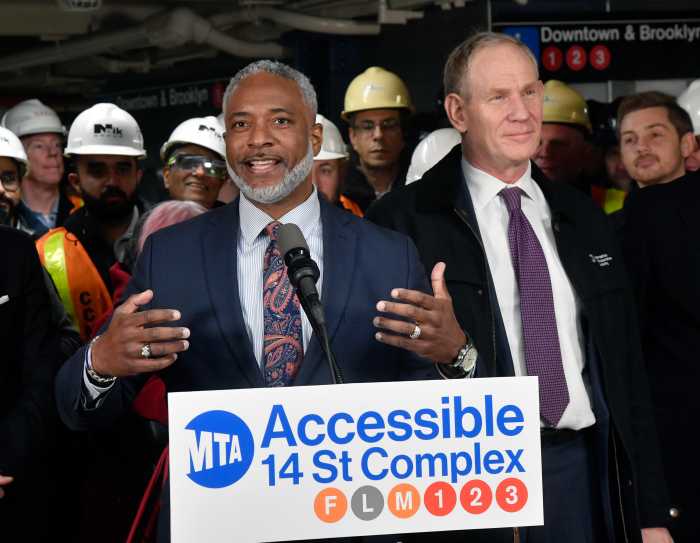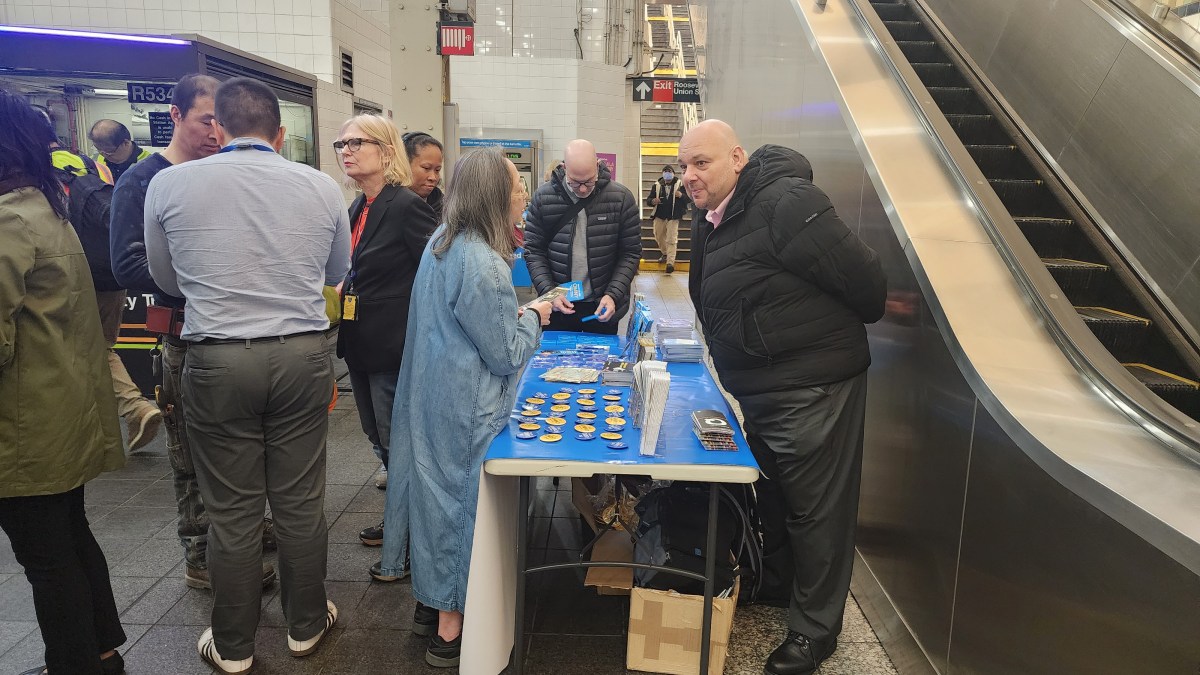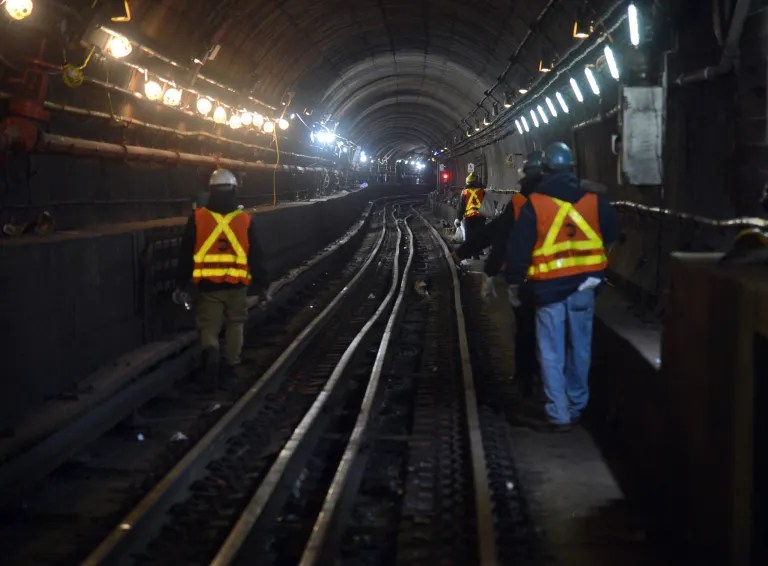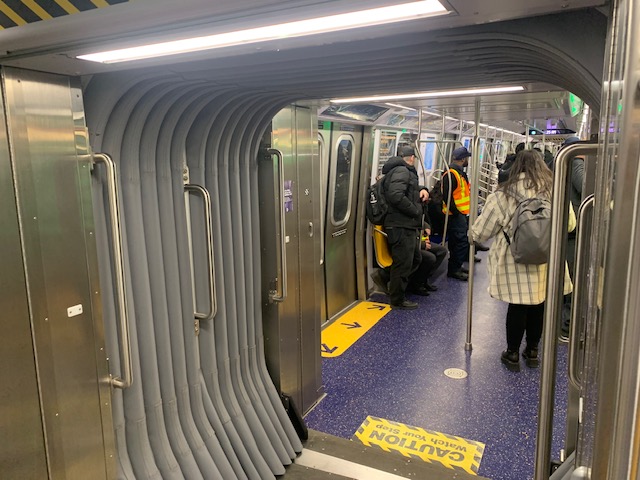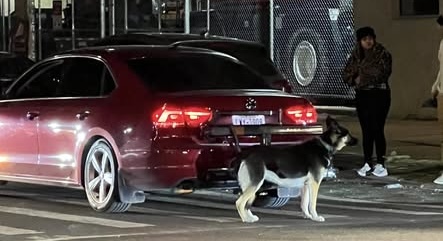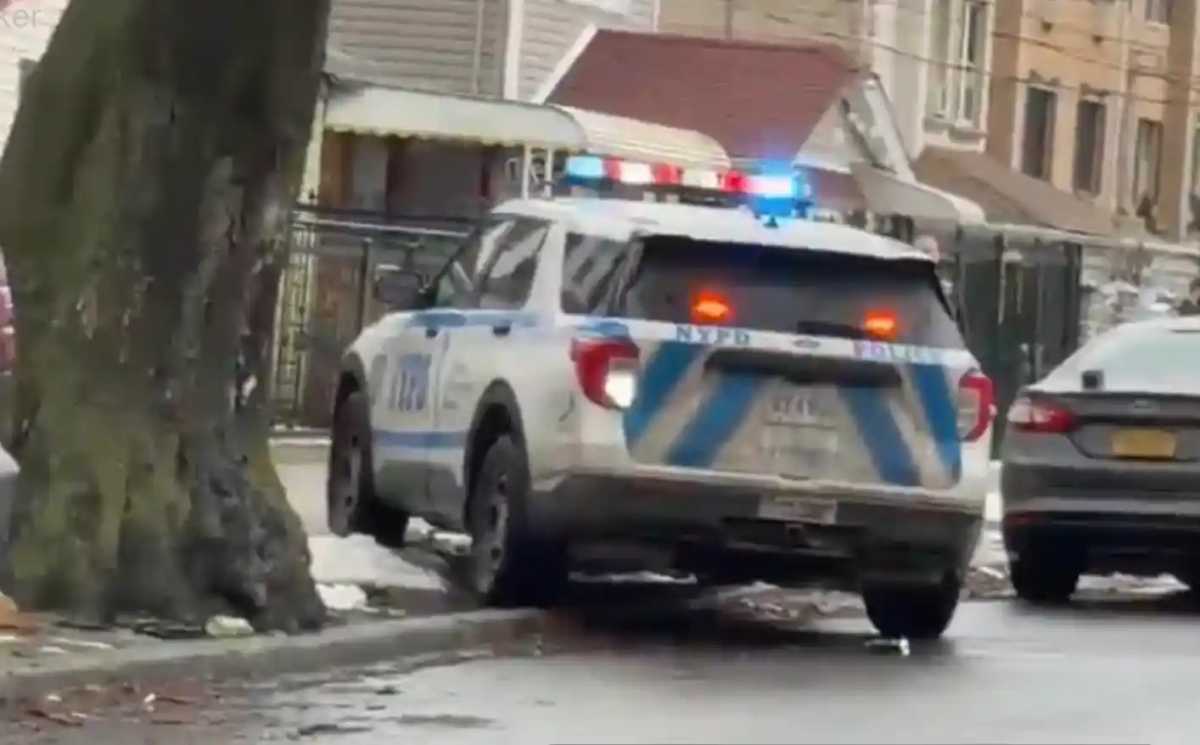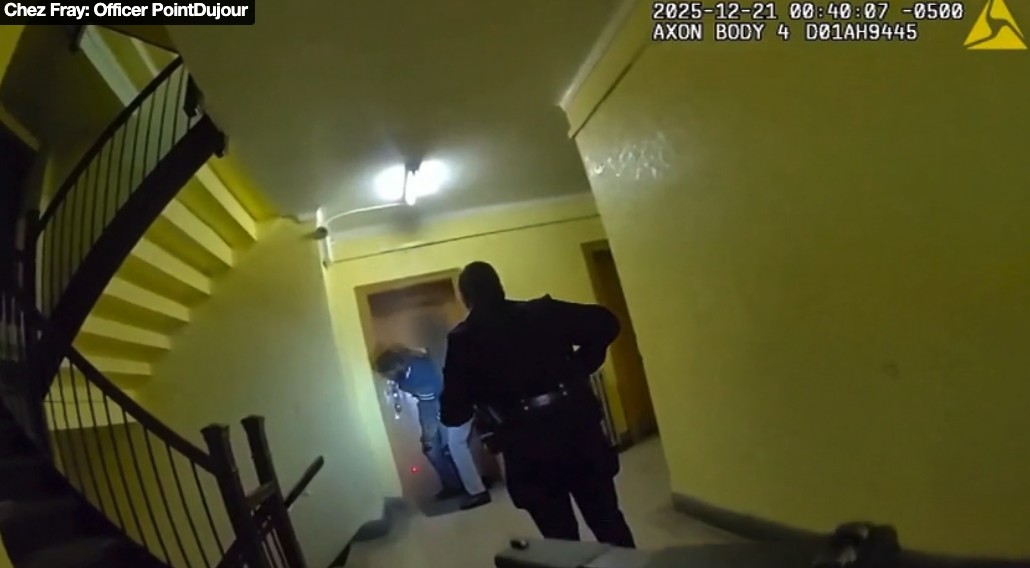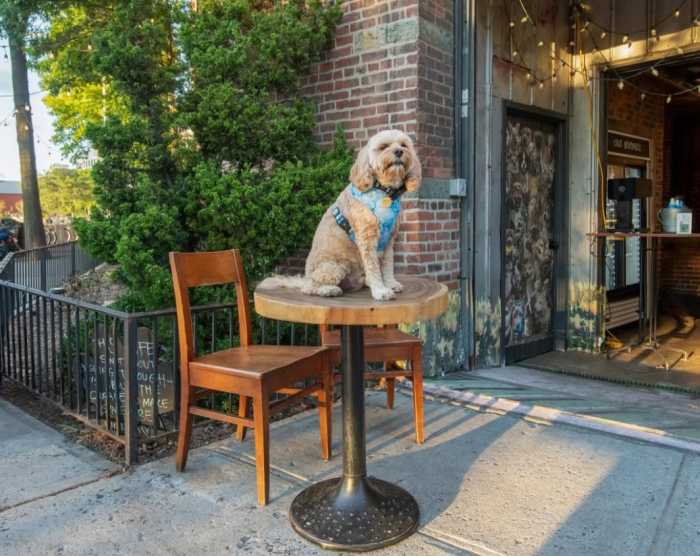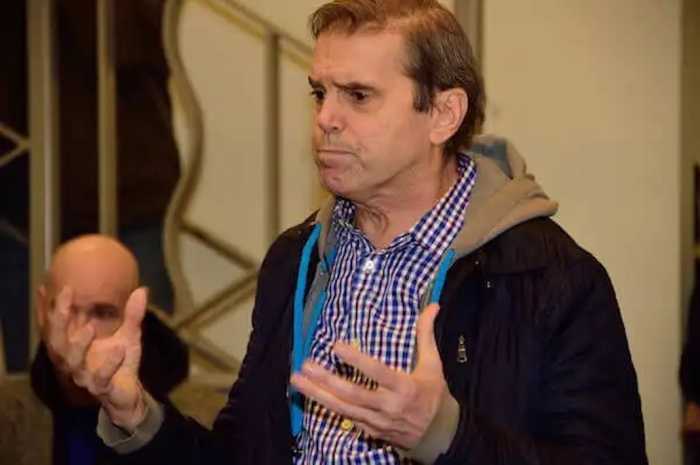The Metropolitan Transportation Authority (MTA) on Monday launched its new Customer Ambassador program, an initiative designed to enhance the rider experience once the Queens bus network redesign begins on June 29.
As part of the program, MTA workers are now stationed at key bus stops across Queens daily 6 a.m. to 8 p.m. through July 12, providing information to commuters about the first phase of the bus overhaul. Several were out in full force on June 16 at busy bus stops located at Sutphin Boulevard and Archer Avenue in Jamaica.
The ambassadors will return to locations throughout Queens when the second half of the redesign launches on Aug. 31.
Customer ambassadors are easily identifiable by their bright orange and yellow vests with the MTA logo. They are stationed at major transit hubs, transfer points and high-ridership bus stops throughout Queens.
MTA workers, including analysts, communications reps, and transportation planners, will take a break from their main jobs to fill thousands of morning and night shifts at key bus stops to promote awareness and distribute materials about the changes, assist customers with wayfinding, and guide them to nearby bus stops. Some workers plan to volunteer on their days off.
Lola Vieira-Sullivan, a transportation planner at the MTA, said her first day on the job as an ambassador has been quiet except for the heavy traffic and horn-honking at her Sutphin Boulevard/Archer Avenue post in Jamaica.
“I haven’t heard any complaints,” she said. “I think it’s too far. The redesign is still two weeks away. I think the questions are going to come a few days before or even the first day.”
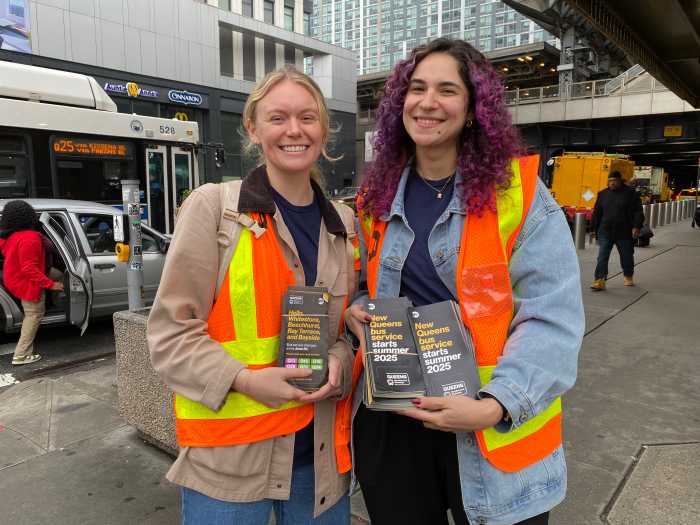
At the Q30 and Q31 stop in Jamaica on Monday, customer ambassador Tandy Primo, an analyst at the MTA, helped several commuters get to their destinations.
“I fill people in on the bus changes. I get them acquainted to where they need to go,” she said.
As MTA workers settled into their posts on the first day of the ambassador program, Demetrius Crichlow, president of NYC Transit, explained how the redesign will help Queens residents navigate the borough.
“The Queens bus network redesign is a once-in-a-generation opportunity to be able to do things right for our Queens riders,” Demetrius Crichlow, NYC Transit president, said. “We’ve done a huge job looking at how we can improve service in Queens. It’s one of the largest areas that has a bus-dependent network, so we really wanted to do it right.”
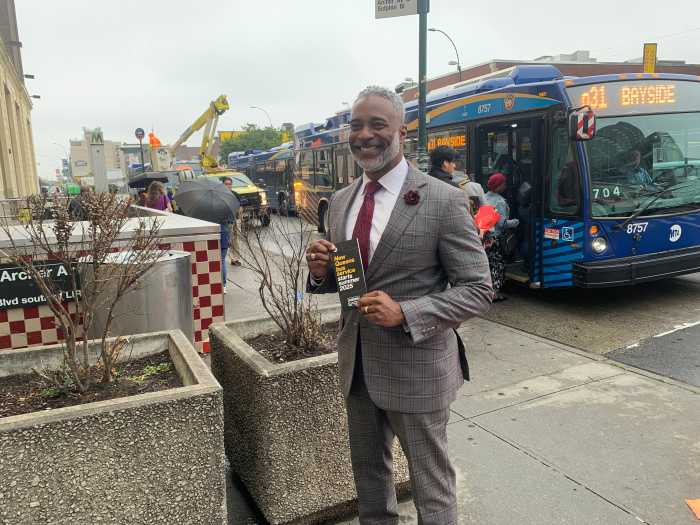
Nearly 70% of the network’s changes will be made during the first phase of the redesign. In total, the overhaul features 124 routes, up from 113, across the nearly 70-year-old bus system. Those routes include 94 local and 30 express lines.
Ramped-up anti-fare-evasion efforts
Crichlow said, along with service improvements, the agency will ramp up anti-fare evasion tactics by deploying more EAGLE Teams that are mostly comprised of retired law enforcement officers on board buses to enforce payment.
“Some of our EAGLE Teams will be coming out with the bus network redesign,” he said. “We are going to have a larger portion come to the Queens area, and what they will be doing for the first couple of week is just letting customers know they have to pay their fare to ride and for us to continue to provide great service.”
MTA officials said paid boardings have increased by 7% at EAGLE intervention stops. EAGLE Team members can change their locations based on well enforcement efforts are working over a given period of time.
“We have pretty good data that tells us which routes, timing, and which boroughs at certain times seem to be more problematic with fare evasion,” Crichlow explained. “And the team itself adjusts. The issues we have with fare evasion this week may not necessarily be there for a month if we put folks there that work with the customers. So we shift our resources when the problems with fare evasion changes around.”
Despite the agency’s efforts to prepare commuters for the changes, many riders are already aware of the redesign. And some are not happy—at least not with some of the changes.
Woodside residents launched a petition to keep the Q32 bus stop at Roosevelt Avenue and 58th Street. That stop is one of several that will be eliminated as part of the redesign. The next closest top is at Roosevelt Avenue and 61st Street.
While the agency is moving or cutting some stops to improve speed and efficiency, the Q32 petitioners said the community’s needs were not considered.
“This is an active bus stop that serves seniors, parents at drop-off and pick-up, students, church-goers and a vibrant and busy community,” one Woodsider said. “The 61st Street stop is several busy blocks away and has been temporarily located multiple times as there is dangerous, ongoing construction at its site.”
Crichlow said the MTA is still engaging with the community on the redesign and will review whether further adjustments are needed.
More information about the Queens bus network redesign
While the customer ambassador provides a personal level of support, riders can also use the MTA’s Route Look-Up Tool, which allows riders to select a bus route from a drop-down menu to see if it will have changes.




